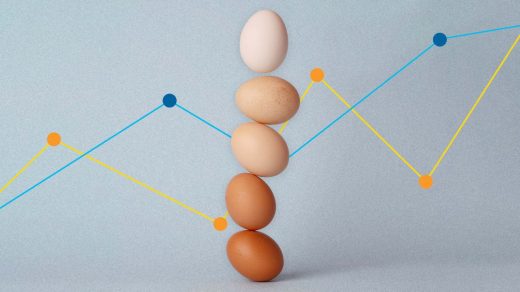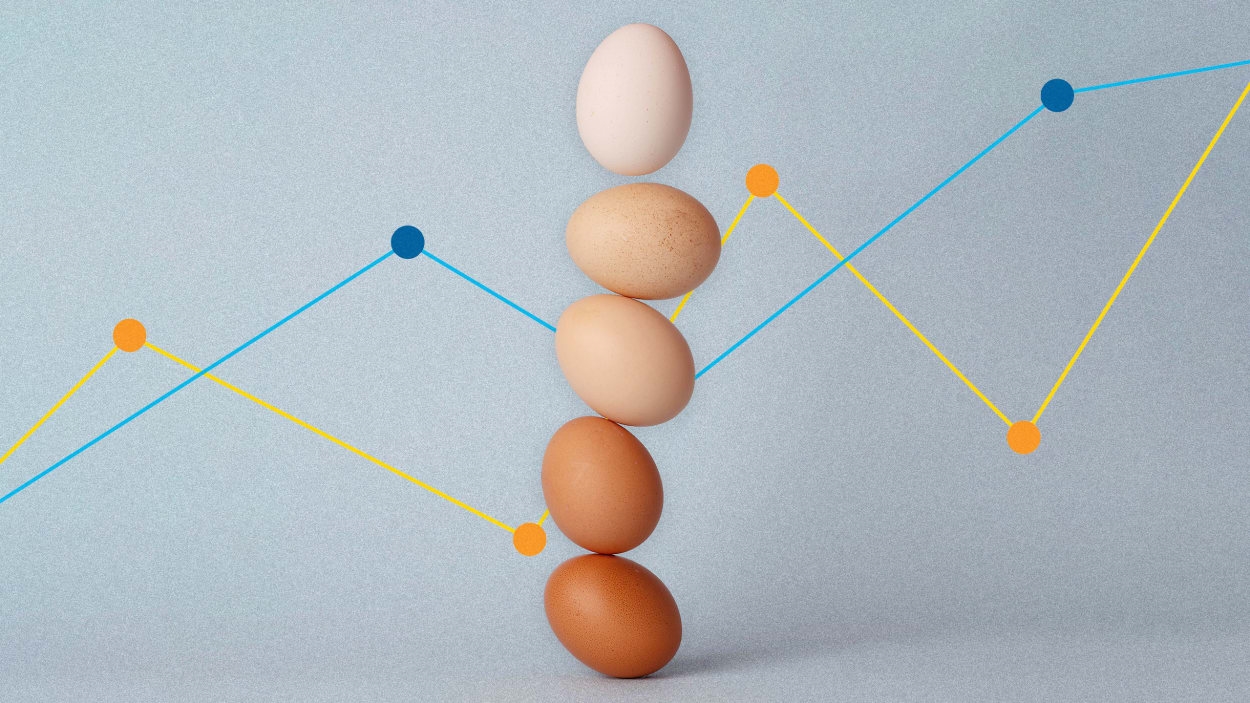‘Eggflation’ is the new name for your supermarket pain. Here’s what’s causing it
These days, cracking an egg is like breaking the bank. The cost of the cooking ingredient nearly doubled from December 2021 to December 2022, with the average price for a grade-A dozen jumping from $1.82 to almost $3.60, according to the Bureau of Labor Statistics. Meanwhile, the selling price of a carton hit $5.50 in the Midwest and $7 in California.
There’s a word for why you’re crying into your breakfast omelette, fried with the precious yolks of 2023’s new liquid gold: It’s called “eggflation.”
Sure, you’re already familiar with last year’s inflation woes, wrought by COVID-19’s supply-chain havoc and the Russia-Ukraine war. But despite a national inflation rate that neared double digits, the rising cost of eggs far outpaced that of other essential consumer goods, like milk, bread, lettuce, and cheese. Hence, the need to coin a term for this unique brand of shopper angst.
There’s also a reason for eggflation, and it’s, um, sick.
Don’t cry for your wallet, cry for the chickens—they’re dying, and that’s why eggs are now so painfully expensive. Early last year, while humans were recovering from the COVID-19 pandemic and venturing outside again, birds fell on tough times. The winged population was stricken with an outbreak of the deadly avian flu, which has culled chicken and turkey flocks across the country.
The sickness is super-contagious and extremely lethal, killing 90% to 100% of the chickens it infects, often within 48 hours, according to the Centers for Disease Control and Prevention. Egg-laying breeds are especially susceptible, which has left farmers with far fewer hens in the shed. (The price of chicken meat, however, has been spared, for the sad reason that “broiler” birds that are raised to be eaten simply don’t live long enough to be thinned out by the avian flu.)
Since February, about 60 million birds have been lost to the disease, and of those, roughly 43 million were egg-laying hens, according to the United States Department of Agriculture and the American Egg Board, a farmer-funded group that markets eggs. (Worse still: If one hen tests positive for the illness, farmers may be mandated to put down the whole coop, per federal rules to prevent the spread of pathogens.) While farmers have scrambled to re-fluff their flocks, and succeeded to some measure—in December, there were 308 million egg-laying hens in the United States, a number that was down by just 20 million from the prior year—shoppers are still feeling the squeeze.
And the relative lack of supply isn’t the only factor in the rising cost of eggs: Other inflation matters, too. The costs of bird seed to feed the hens, fuel to transport the eggs, and energy to keep the right stuff warm and the right stuff cold, are all also increasing, contributing to higher price tags on grocery store shelves.
Like a recipe for disaster, these constraining factors have mixed with surging demand for eggs in the past couple months. When the winter holiday season comes, like clockwork, Americans start baking more: They practice perfecting their pumpkin pies for Thanksgiving dinner and Christmas cookies for Santa. And let’s not forget that eggs are one of food’s most versatile ingredients: They can be used in sweet, savory, whipped, dense, raw, crunchy, boiled, stir-fried, soup, or ice cream dishes, making them perfect for every course of every family, friends, office, church, banquet, or restaurant holiday feast. The high price tags haven’t deterred buyers, either. Eggs are a pantry staple. Historically, even when their price goes up, shoppers stay loyal—eggs are still the cheapest protein, after all.
But now that peak demand has passed, experts expect egg prices to make like Humpty Dumpty and, well, fall. Some forecast that elevated prices could last through March, but most agree the worst is likely over.
Still, it would be best not to count your chickens before they hatch, because this ordeal has already been an outlier. Outbreaks of avian flu typically happen during the birds’ spring migration and disappear by summer, experts told news outlets—but last year, the virus re-appeared in September. (It’s not just the U.S., either—Britain and Japan fell victim, too.) As one egg trade strategist told CNBC, it’s “‘act of God’ type stuff.” You just never know.
(46)



